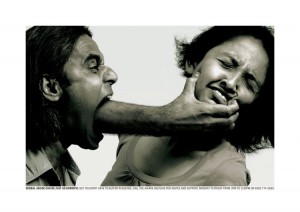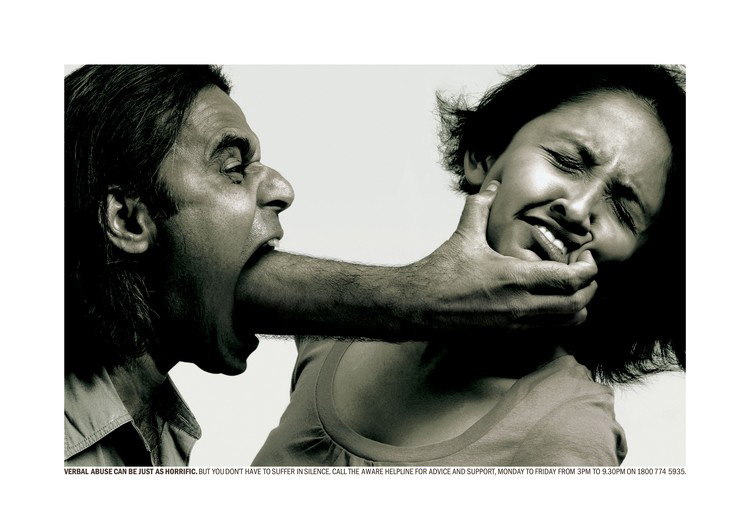How can we tell the difference between BDSM and abuse?
Telling the difference between BDSM and Abuse is important, so how can we tell the difference between BDSM and abuse when to the outside it looks a little like the same? The short answer is CONSENT
However, it’s more complicated than just consent. Many people enter into what they think are BDSM relationships, or are cajoled into being dominated by a partner, only to realize too late that it was just a different way for them to control/abuse them. To some people, BDSM and abuse are one and the same. Some people can see the difference in other people’s relationships, but find it difficult to apply that same logic to their own relationships.
The first step in being able to tell the difference, is understanding what makes the two fundamentally different and as we have said before “BDSM stands for BD (Bondage & Discipline) | DS (Dominance & Submission) | SM (Sadism & Masochism)”
 Sadism and Masochism are the parts of BDSM that the general public is most familiar with, but whilst there are many sadists and masochists, there are many more who are also into the BD and DS aspects of the culture, which involve significantly less pain. Thanks to books like 50 Shades of Gray a rich dominant man controlling a submissive woman’s every move is what is being portrayed as BDSM. And in many of these fictional accounts, we’ve found that the line between actual consenting play and, at the very least, emotional abuse is incredibly blurred.
Sadism and Masochism are the parts of BDSM that the general public is most familiar with, but whilst there are many sadists and masochists, there are many more who are also into the BD and DS aspects of the culture, which involve significantly less pain. Thanks to books like 50 Shades of Gray a rich dominant man controlling a submissive woman’s every move is what is being portrayed as BDSM. And in many of these fictional accounts, we’ve found that the line between actual consenting play and, at the very least, emotional abuse is incredibly blurred.
So, to truly be able to understand the difference, we have to throw out the preconceived notions that we have absorbed through the media, and start from scratch. BDSM encompasses a wide range of activities – that range from the physical all the way to doing the washing up, working out or just asking to go to the toilet – the participants tend to fall into one of two roles that allows for a power exchange. I.e. The submissive voluntarily gives up some or all of their power to the dominant. Underlining the power exchange is the consent of all involved parties, and many steps are taken to ensure a safe, healthy and rewarding sexual experience.
BDSM allows individuals to play out various fantasies in a different form of role play. When you put on a naughtynurse costume, you can pretend to be someone else, and feel less inhibited – this departure from the every  day and the exploring of fantasies is what makes BDSM appealing to many people. These activities are frequently referred to as scenes, or sessions. These activities can involve hot wax, whips, ropes, punishment, control, humiliation, love and praise. And whilst alarm bells may be ringing, as we are frequently told that the abuser who hits his victim and then apologizes, claiming love is just manipulating his victim further, it has to be remembered that every aspect of a scene/session is discussed in advance. Consent, communication and respect are the foundations of a good BDSM relationship – and it is always important to know each others limits before potentially pushing them. An individual who does not ‘play’ by the rules of that session will quickly find themselves out of play-partners. In a relationship, through discussions you tend to find out what each others limits are, and explore the boundaries slowly.
day and the exploring of fantasies is what makes BDSM appealing to many people. These activities are frequently referred to as scenes, or sessions. These activities can involve hot wax, whips, ropes, punishment, control, humiliation, love and praise. And whilst alarm bells may be ringing, as we are frequently told that the abuser who hits his victim and then apologizes, claiming love is just manipulating his victim further, it has to be remembered that every aspect of a scene/session is discussed in advance. Consent, communication and respect are the foundations of a good BDSM relationship – and it is always important to know each others limits before potentially pushing them. An individual who does not ‘play’ by the rules of that session will quickly find themselves out of play-partners. In a relationship, through discussions you tend to find out what each others limits are, and explore the boundaries slowly.
Responsible and loving play partners in BDSM will take many measures to keep their practices safe.
- Pre-play negations
- Educational workshops
- Having a safe word – preferably two (one for slow down, one for stop completely)
- Having a discussion on soft limits and hard limits, and not breaking them without full prior discussion
- Discussions and reassurances afterwards, particularly if a scene has gotten very emotional
- The use of contraceptives (unless in total agreement about not using them)
- Safety equipment such as first aid kits and paramedic scissors (if one person is tied up and starts to panic, releasing them quickly is of utmost importance)
 An abusive relationship is devoid of these aspects; instead of allowing two (or more) people to explore their deepest fantasies in a protective constructive way, they allow one person to control another without their explicit consent, and without allowing them the right to stop what is happening to them. Even those whip wieldingdominatrixes HAVE to stop if their submissive says they want to stop. Where as abusive relationships tend to have the following characteristics:
An abusive relationship is devoid of these aspects; instead of allowing two (or more) people to explore their deepest fantasies in a protective constructive way, they allow one person to control another without their explicit consent, and without allowing them the right to stop what is happening to them. Even those whip wieldingdominatrixes HAVE to stop if their submissive says they want to stop. Where as abusive relationships tend to have the following characteristics:
- Coercion
- Physical/emotional abuse
- Loss of freedom + Isolation
Abuse is the improper usage or treatment of an entity, often to unfairly or improperly gain benefit. Abuse can come in many forms, such as: physical or verbal maltreatment, injury, assault, violation, rape, unjust practices; crimes, or other types of aggression.
Of course there are many more aspects to an abusive relationship, but these are three that can be confused with BDSM. Certain people will also claim that they are practicing BDSM when they are in fact abusing their partner – this usually happens if the individual is unfamiliar with actual BDSM practices, and believes their partner is more experienced and ‘knows best’.
Its best to know some very important warning signs, particularly for people who feel they are submissive and are looking for someone to dominate them:
- If they start of by telling you a submissive has no rights or opinions and their way is the only way
- If they don’t believe in discussing boundaries and limits, because their way is the only way
- If they ignore your safe word
- If they refuse to use contraception or disclose their health/STD status
- If they isolate you from your friends and family
- If your partner hits you in anger, it is not a play punishment, it’s abuse
- If you say you are not comfortable doing something, and they try to force you to do it anyway/mock you for being ‘weak’ – Be wary, this is a big red flag
- If they want you to sign over your possessions and/or money to them, because you are now theirs
Remember, there are always going to be people trying to take advantage of others, and people who want to hurt others. Don’t let them skew BDSM to serve their purposes: If it’s not consensual, mutually agreed upon, and done with both the mental and physical safety of the submissive in mind, it’s abuse.





